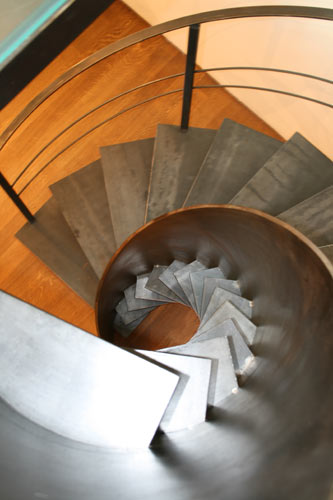
The brick wall creates rhythm in this bedroom.
(Image from Country Living, "Guest Bedroom Decor.")
In Interior Design, rhythm is the means through which the eye is drawn around the room. It creates harmony and unity in design. Successful rhythm will create expectation, anticipation and even surprise. Rhythm may be used to draw attention to the focal point in the room.
There are five ways to create rhythm:
1. Repetition and Alternation

Repetition is created through the multiple uses of white in this bedroom.
(Image from Country Living, "Guest Bedroom Decor.")
Repetition establishes rhythm through repeated elements in the design. Repetition may be found in color, pattern, texture, line, architectural elements, lighting and furniture. An example of repetition can be found in a series of chairs lined up in a room.
Alternation is the sequence of two or more components creating a pattern which the eye can easily follow. An example of alternation would be a series of pillows in two coordinated prints creating a ABABAB pattern.
2. Progression

(West Elm Modular Nesting Tables)
Progression is the use of shapes moving from large to small, or small to large (an example may be found in nesting tables). You can also create progression with colors gradating from dark to light or light to dark.
3. Transition

The strong lines of the exposed-beam ceiling draw the eye from one side of the room to the other.
(Image from Country Living, "Guest Bedroom Decor.")
Transition leads the eye without interruption from one point to another. Some ways you can create this continuous line include: architectural elements such as crown molding and wainscoting, a carpet runner, or a painted wall.
4. Contrast

(Photograph from Joe Schmelzer)
Contrast or opposition is created by an abruptly changing, repetitive pattern. Some examples include: contrasting patterns (striped, plain, striped, plain); color (black, white, black, white); or varying forms (angular and circular).
5. Radiation

(Image of spiral staircase located at Trendir.com)
Radiation is established through the use of concentric or spoke-like lines from a central point. Radial rhythm is often found in windows and floor patterns.
